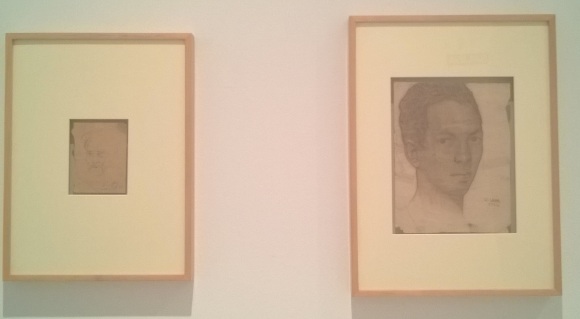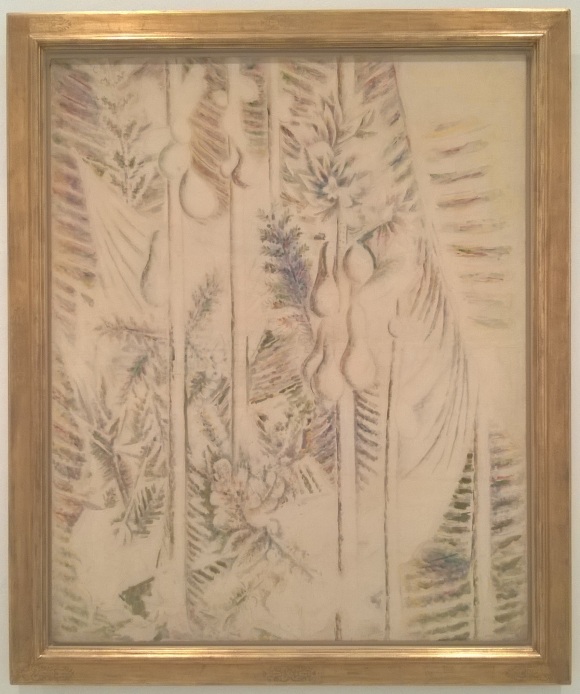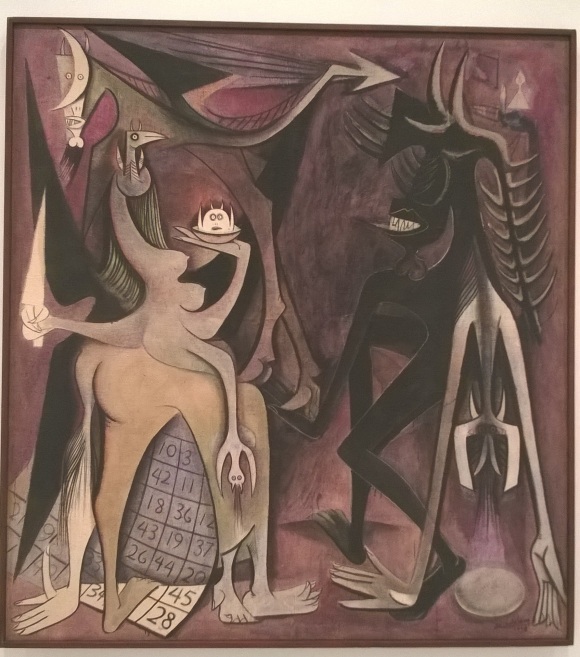Wifredo Lam was a fascinating artist, a truly cosmopolitan figure who eluded any fixed categorization while interwined personal and artistic contacts with all the most important Western avant-gardes of the Twentieth Century.
Born in Cuba to a Chinese father and a mother from African descent, throughout his life he retained elements of his cultural background in his practice, infusing them with the influence he got from different sources. His artistic evolution is aptly narrated by an exquisite retrospective exhibition that started in Paris in September 2015 before moving to Madrid from April to mid-August 2016, where I travelled last week to visit it.


With the victory of Franco’s party, Lam and his friends fled to Paris and then Marseille in 1938. Between this year and 1941, Wifredo befriended many intellectuals and artists who were to bear a huge impact on his style and career, and who would remain his friends throughout his life. He particularly became close to Picasso, who shared with him an interest in the different African masquerade traditions, and André Breton, the main theorist of Surrealims. In this period he became fascinated with techniques of automatic production and collaborated with the Surrealist group to many joint works, some of which are displayed in the exhibition. He also developed the theme of the Femme cheval, a dreamlike hybrid figure in between a woman and a horse that is the best example of the Surrealist influence on his creativity. In 1941 Lam fled Marseille and visited Martinique along with Breton. Here, he got the chance to meet Aimé Césaire, poet of Négritude, who shared his negative views on racial and cultual domination.
In 1942, after twenty years, Lam went back to Cuba and lived and worked there until 1952. This is commonly accepted as the period of his artistic maturity. This exhibition in particular sheds a new light on his relationship with the Cuban political establishment. Although an advocate of revolution and socialism, Lam never officially bound himself to any political party, retaining his individual freedom of thought beyond all attempts to categorize him as a Marxist. His artistic production in Cuba focused on giving voice to a distinctive Cuban identity that was the original outcome of the fusion of cultural elements from all over the world, from China to West Africa, from Europe to the Americas. Many symbolic features conveyed this message and combined it to an harsh comment on social inequalities and exploitation. The jungle in particular became the preferred theme, representing both the place where to escape slavery and where to worship the ancient Yoruba gods that arrived to the New World during the centuries of the transatlantic slave trade. Also basing his visions on the work of his anthropologists friends Lydia Cabrera and Fernando Ortiz, he claimed for Cuba a variegated cultural background that appropriated elements of different traditions into a unique form that was to be preserved from the influence of the West. In this view, it is certainly a pity that his masterpiece, La Jungla (The Jungle, 1943) was not there to behold.


From 1954, Wifredo and his family settled in Albisola Marina in Liguria, Italy, invited by Jorn who also lived there and was experimenting with terra cotta. It was Jorn who introduced him to this extremely protean medium through which Lam informed some 300 artworks in 1975. In the last twenty years of his life, his tireless artistic wit never slowed down, as well as his wanderings: He visited Egypt, India, Thailand, Mexico, expanding his collection of non-Western art, and he worked to the autobiographical project Le Nouveau Monde de Wifredo Lam, while getting more and more international recognition. Wifredo Lam died in his home in Paris aged 80, just after completing his latest series of engravings.
With more than four hundred objects on display paintings, drawings, photographs, letters, reviews and rare books, this exhibition succeeds in conveying the impression of a full, dynamic life, framed by long-lasting friendships and high ideals. The syncretism of his practice defies common notions of centre and periphery, placing this poliedric artist at the centre of Modern Art in a global rather than Western perspective.
…Feels like worth seeing it? You won’t have to rush to Madrid, because Wifredo Lam will be on display at Tate Modern from 14 September 2016 to 8 January 2017 (Adult ticket: £16, Concession: £14). No excuses.
Useful links:
Centre Pompidou exhibition page (Paris): https://www.centrepompidou.fr/cpv/resource/cbyd4kE/rbydeKb
Museo Nacional Reina Sofia exhibition page (Madrid): http://www.museoreinasofia.es/en/exhibitions/wifredo-lam-0
Tate Modern exhibition page (London): http://www.tate.org.uk/whats-on/tate-modern/exhibition/ey-exhibition-wifredo-lam







